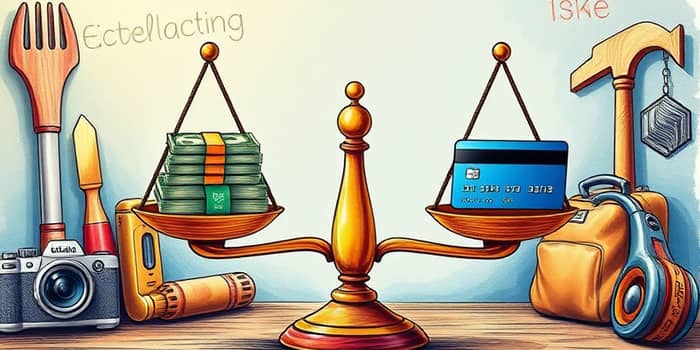
When facing a major expense, choosing the right financing method can shape your long-term financial health. In this guide, we explore two popular options—personal loans and credit cards—and weigh their costs, benefits, and ideal use cases.
Personal loans deliver a lump sum of cash upfront, directly to your bank account. You repay the borrowed amount in equal monthly installments over a fixed term, typically ranging from two to seven years. Lenders set loan amounts based on creditworthiness, spanning $1,000 to $100,000, making them suitable for medium to large expenses.
Interest rates on personal loans are fixed for the loan’s duration, averaging around 12.43% but ranging from 5.99% to 35.99%. Those with excellent credit can secure rates as low as 18.68%. It’s important to factor in origination fees (often 1%–8%), late payment charges, and potential prepayment penalties when comparing costs.
Because of their structure, personal loans are ideal for one-time expenses such as home improvements, weddings, car repairs, medical bills, or consolidating high-interest debt into a single payment plan.
Credit cards offer a convenient revolving line of credit that you can use repeatedly up to a preset limit, often up to $10,000. Your monthly bill varies depending on purchases and payments: you may pay the minimum amount due or settle the full balance to avoid interest.
Typical variable APRs hover around 24.72%, with some cards charging even higher rates. However, many issuers provide promotional 0% APR windows on purchases or balance transfers, which can be leveraged for large expenses if you pay off the balance before the introductory period ends.
Additional features include annual fees (ranging from $0 to $500+), late payment penalties, foreign transaction fees, and rewards programs offering cash back, points, or miles. Credit cards excel at everyday spending—but carry a risk of variable rates can climb quickly if balances are carried month to month.
This comparison underscores that personal loans deliver predictability, while credit cards offer ongoing flexibility and perks.
While personal loans can offer lower rates than credit cards, they come with rigid monthly payments with no flexibility if your financial situation shifts. Origination fees and potential prepayment penalties can also add to your total cost.
On the other hand, credit cards carry the danger of spending beyond means becomes a risk if you only make minimum payments, exposing you to high variable rates. Multiple fees—annual, balance transfer, foreign transaction—can accumulate if not carefully managed.
Both products impact your credit score. Responsible use, timely payments, and keeping balances low can strengthen your credit, but missed or late payments can harm your score and trigger penalty APRs.
Before deciding, review the total repayment cost over time, not just the monthly payment. Factor in all fees and calculate the true all-in APR for personal loans and credit cards.
Assess your credit score and shop around for the best offers. Even a small difference in APR can translate into significant savings on large balances.
Only borrow what you can confidently repay on time; this approach safeguards your financial health and builds positive credit history. Establish a budget or automatic payment schedule to keep yourself on track and avoid unexpected shortfalls.
By carefully weighing interest rates, fees, repayment structures, and rewards, you can choose the financing tool that aligns with your needs and goals—turning big purchases into smart investments rather than burdensome debts.
References













